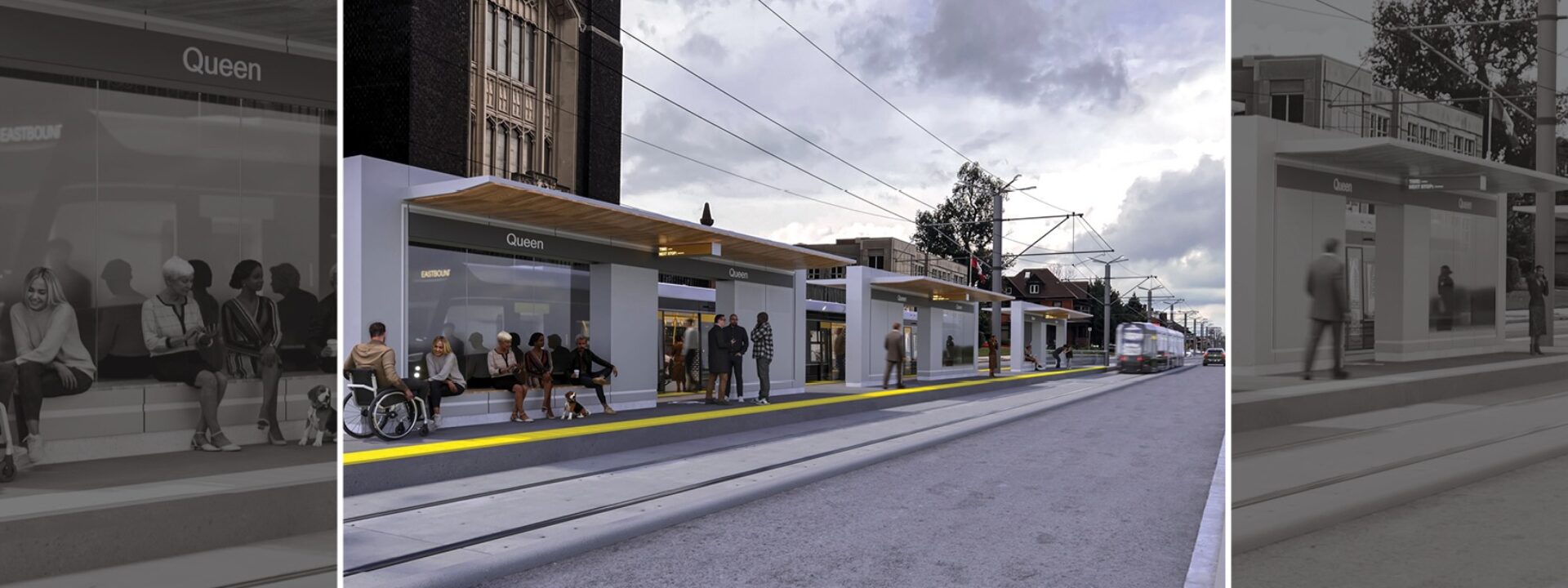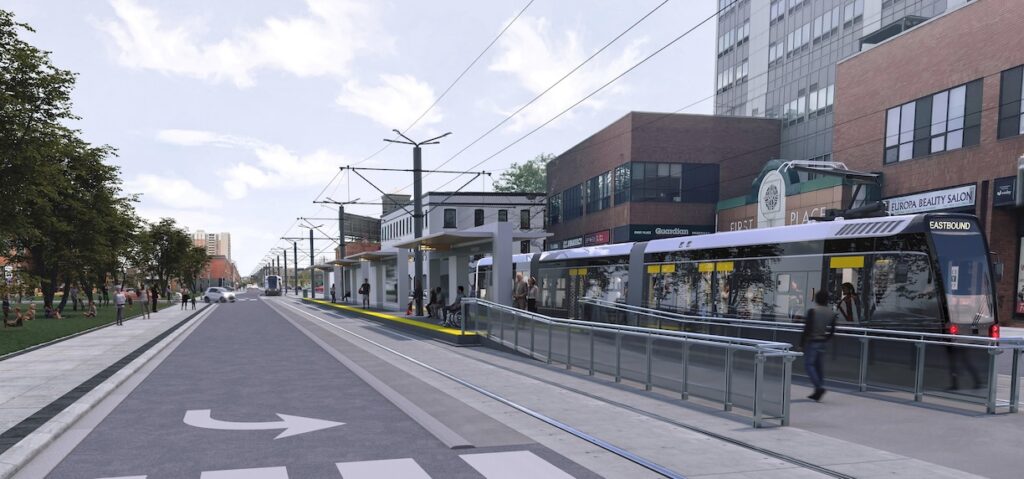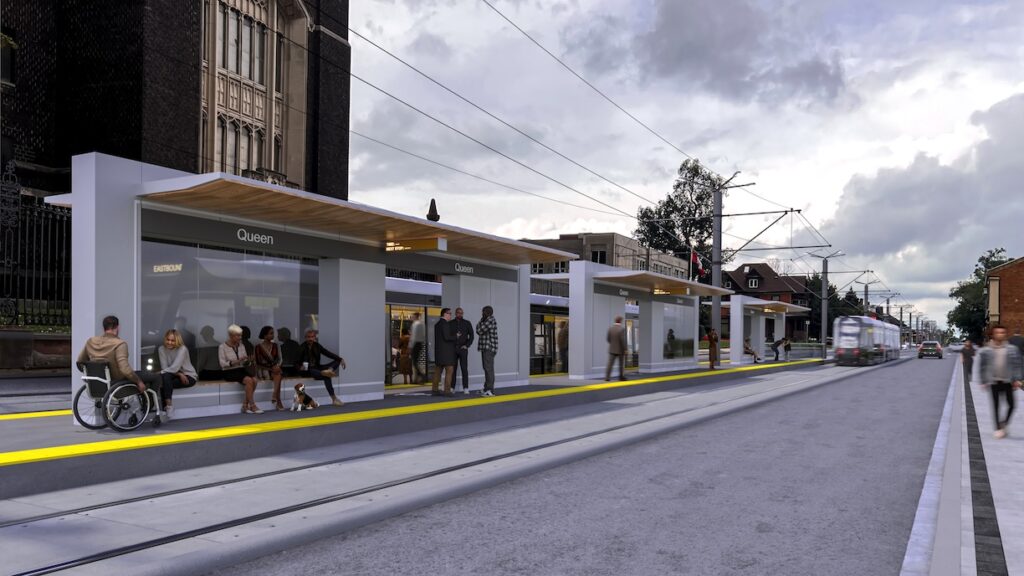Reclaiming LRT

A rapid transit line crossing Hamilton holds tremendous promise and purpose and we can’t forget that as this project drags on.
It has been over three years since the announcement that Hamilton light rail transit (LRT) was back on track. The mood on May 13, 2021 was one of optimism and renewed excitement as Ottawa and Ontario each committed $1.7 billion to advance the Hamilton LRT project for a total investment of $3.4 billion to support construction. The press release by Metrolinx explained: "Through this partnership, the province and federal government are taking a significant step towards advancing this shovel-ready LRT project that will offer frequent and reliable connections on the 14-kilometre line from Eastgate Square through downtown Hamilton to McMaster University."
Leading up to the press conference, there was an outpouring of community engagement, first sparked by the outrage around LRT's initial cancellation, then focused on reasserting the purpose of this transformational project.
Residents reminded elected officials, from all levels of government, why they decided in favour of this project in the first place. Why, over five municipal elections where it was a major, if not the major issue, the pro-LRT candidate for mayor was elected over and over.
Unfortunately, in the three years since the announcement, momentum and excitement for this project has dissipated through a combination of long periods of communication silence and snail's pace progress on getting things going. This, understandably, had led to the misunderstanding of what is happening and misinformation concerning what the project is about. Within this context, it's worth reiterating the promise and purpose of LRT.

First, the idea to build a permanent east-west rail line is overwhelmingly supported by studies, transit experts and planners. Support for the system is rooted in facts, best practices, as well as history. The Hamilton Street Railway (HSR) has been in operation for 150 years, building up routes and ridership. About 30 years ago, ridership along the major east-west corridor grew to the point where the B-Line express bus route was launched. That corridor has become a foundation to our modern transit system, continuing to build up ridership over the decades. Now, in the
2020s, it is well past time to upgrade the B-Line corridor to LRT. In fact, background studies for the project showed that opening day ridership would already be above average for similar sized LRTs across North America.
Further, it is important that the B-Line is a permanent rail line. There are many logical reasons for this. First and foremost, it creates the most efficient form of rapid transit, attracts significant new riders and is the most cost effective from an operational point of view. Metrolinx officials who have studied Hamilton estimate that with LRT, ridership will double by 2041 whereas with our current bus system, only moderate gains will be made. This translates into millions in new annual revenues that can be reinvested in the entire HSR system.
Second, there is good reason why the ridership on the B-Line is high. This isn't a route in the middle of nowhere. It serves many of the existing and developing major centres of activity in Hamilton. The route already serves two of the largest employment nodes in Hamilton, downtown and McMaster University, connecting tens of thousands of workers to their jobs. Further, the West Hamilton Innovation District is adjacent to the route and will house the LRT maintenance yard. This District functions as a life sciences mega-hub of innovation for corporate, academic and government research in science and technology. It already contains Canada's pre-eminent materials testing lab, an internationally renowned centre for vehicle electrification, autonomous vehicles and hybrid tech, as well as companies involved in bio-tech. When fully built out, the District will house thousands of new jobs.

At the other end of the route, Eastgate Square, is another major development that will see the reconfigured mall house several new residential towers and thousands of new residential units. Not to be forgotten, all along the route, there are redeveloping neighbourhoods complete with new residential towers, multiple vibrant commercial districts, as well as major attractions, like Gage Park and Tim Hortons Field, which only further increase demand along this corridor. All told, LRT will connect these significant points of living and working together.
Third, it's important to remember that light rail transit is the start of building something greater – an entire rapid transit network, something called the BLAST network. It is the start of building a truly integrated transportation network with fast efficient connections all across Hamilton. For example, the A-line express bus route that runs from the downtown to the airport was launched in 2009, and it is starting the journey to building ridership. But the BLAST network all starts with the letter B. The east-west B-Line is the backbone of the network. However, we shouldn't be looking at these routes in isolation. If you live on the east Mountain, or in Dundas, you will benefit from LRT as a transit user, as well as a local taxpayer. That's because the entire HSR system will integrate with LRT, making movement and connections easier and faster.

Fourth, LRT is an important part of a plan to make Hamilton financially sustainable. Right now, we are living with the legacy of urban sprawl that has saddled us with an annual infrastructure deficit of $200 million. This is due, in part, to the fact that there isn't the density of taxpayers to properly pay for all the infrastructure and services around them. The only way to solve this is to build more homes within the urban boundary to increase the level of property taxes to sustain the roads, sewers, and services, and we need to do this as quickly as possible. While we can create
rules and incentives to encourage more residential infill, what LRT does is super-charge all those efforts. Light rail becomes a major investment magnet that can reshape the real estate landscape quickly. This is one of the major
advantages of LRT over buses. Permanent rails inspire investor confidence.
The construction of an LRT line is a strong statement from the city that it is serious about building a network of higher order transit. As has been the experience in other cities, that confidence will spur an acceleration of investment and development along the LRT corridor, creating enhanced tax revenues, development charges and jobs during and after the construction.
Finally, it's important to remember that Hamilton doesn't have a Plan B that comes anywhere close to addressing the variety of issues facing our city, whether economically, socially or environmentally. Light rail transit builds on decades of planning, decades of investment, and millions of dollars in studies, reports and strategies. It's time to get rolling on this vitally important project and reclaim the promise and purpose of LRT.
Paul Shaker is a Hamilton-based urban planner and principal with Civicplan.












